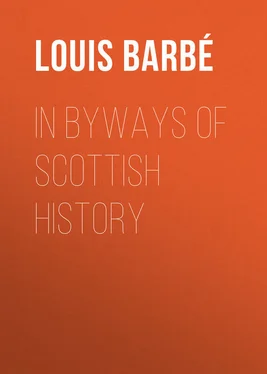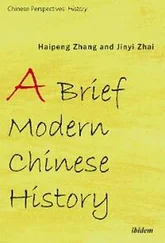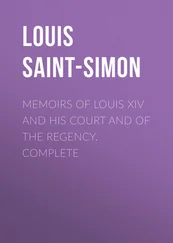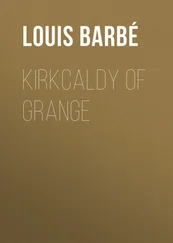Louis Barbé - In Byways of Scottish History
Здесь есть возможность читать онлайн «Louis Barbé - In Byways of Scottish History» — ознакомительный отрывок электронной книги совершенно бесплатно, а после прочтения отрывка купить полную версию. В некоторых случаях можно слушать аудио, скачать через торрент в формате fb2 и присутствует краткое содержание. Жанр: foreign_antique, foreign_prose, на английском языке. Описание произведения, (предисловие) а так же отзывы посетителей доступны на портале библиотеки ЛибКат.
- Название:In Byways of Scottish History
- Автор:
- Жанр:
- Год:неизвестен
- ISBN:нет данных
- Рейтинг книги:4 / 5. Голосов: 1
-
Избранное:Добавить в избранное
- Отзывы:
-
Ваша оценка:
- 80
- 1
- 2
- 3
- 4
- 5
In Byways of Scottish History: краткое содержание, описание и аннотация
Предлагаем к чтению аннотацию, описание, краткое содержание или предисловие (зависит от того, что написал сам автор книги «In Byways of Scottish History»). Если вы не нашли необходимую информацию о книге — напишите в комментариях, мы постараемся отыскать её.
In Byways of Scottish History — читать онлайн ознакомительный отрывок
Ниже представлен текст книги, разбитый по страницам. Система сохранения места последней прочитанной страницы, позволяет с удобством читать онлайн бесплатно книгу «In Byways of Scottish History», без необходимости каждый раз заново искать на чём Вы остановились. Поставьте закладку, и сможете в любой момент перейти на страницу, на которой закончили чтение.
Интервал:
Закладка:
With this episode our knowledge of Mary Seton's history is nearly exhausted. There is no further reference to her in the correspondence of the next six years, during which she continued to share her Queen's captivity. About the year 1583, when her own health had broken down under the hardships to which she was subjected in the various prisons to which she followed Mary Stuart, she begged and obtained permission to retire to France. The remainder of her life was spent in the seclusion of the abbey of St. Peter's, at Rheims, over which Renée de Lorraine, the Queen's maternal aunt, presided.
The last memorial which we have of Mary Seton is a touching proof of the affection which she still bore her hapless Queen, and of the interest with which, from her convent cell, she still followed the course of events. It is a letter, written in October, 1586, to Courcelles, the new French Ambassador at Holyrood; it refers to her long absence from Scotland, and concludes with an expression of regret at the fresh troubles which had befallen the captive Queen.
I cannot conclude without telling you the extreme pain and anxiety I feel at the distressing news which has been reported here, that some new trouble has befallen the Queen, my mistress. Time will not permit me to tell you more. 105
It may be supposed that what the faithful maid of honour had heard was connected with Babington's conspiracy and its fateful failure.
THE SONG OF MARY STUART
Those who are acquainted with Brantôme's delightful collection of biographical sketches of Illustrious Ladies, will remember that one of the most noteworthy of them is devoted to Marie Stuart. In it, amongst many other interesting details, he states that the Queen used to compose verses, and that he had seen some "that were fine and well done, and in no wise similar to those which have been laid to her account, on the subject of her love for the Earl of Bothwell, and which are too coarse and ill-polished to have been of her making". In another passage he says that Mary "made a song herself upon her sorrows"; and he quotes it. 106For close on two centuries and a half the " Chanson de Marie Stuart ", as given by him, has been reproduced in biographies of the Queen of Scots, and has found its way into numberless albums and anthologies. That it should have been accepted without hesitation on Brantôme's authority is hardly surprising. Of those who have written from personal acquaintance with Mary, few were in a better position than was the French chronicler to know the truth about her. He remembered her from her very childhood. He was familiar with all the circumstances of her training and education at Saint-Germain. He had witnessed the precocious development of the talents which excited the admiration of the courtiers that gathered about Henry II and Catharine de' Medici. He did not lose sight of her when, at a later date, her marriage with the heir to the crown of France gave her a household of her own in the stately residence of Villers-Côterets. He witnessed the enthusiasm which greeted her as Queen-Consort, as well as the deep and universal sympathy which her early bereavement called forth; and when the "White Queen", the dowager of seventeen, left the country of her affection to undertake the heavy task of governing her northern kingdom, he was amongst those who accompanied her on her fateful journey. In the circumstances, it did not occur, even to those who, knowing Brantôme's character, might feel that much allowance was to be made for the conventional enthusiasm of the courtier, to suspect that any of his statements concerning Mary Stuart was to be rejected as wholly devoid of foundation. And yet, we are in a position to prove that, in one instance, he asserted what he knew to be false; and we shall follow that up by producing the strongest evidence in support of the further charge that he was guilty of a literary forgery.
In his sketch of Mary Stuart, Brantôme does not place her "Song" where it would most naturally be looked for, that is, immediately after the passage in which he refers to her poetical talent. He introduces it clumsily, and in a way which, though perhaps not sufficient of itself to justify suspicion, is, at least, calculated to strengthen it when once it has been aroused. He begins by giving a description of the Queen, as she appeared in her white widow's weeds. "It was", he says, "a beautiful sight to see her, for the whiteness of her face vied for pre-eminence with the whiteness of her veil. But, in the end, it was the artificial whiteness of her veil that had to yield, and the snow of her fair complexion effaced the other. And so there was written at Court a song about her in her mourning garments. It was thus: " and here the anonymous poem is quoted. It consists of two stanzas, each containing six short lines. They depict the Goddess of Beauty, attired in white, wandering about, with the shaft of her inhuman son in her hand, whilst Cupid himself is fluttering over her, with the bandage, which he has removed from his eyes, doing duty as a funereal veil on which are inscribed the words: "Mourir ou estre pris". These verses, in which it is difficult to discover any special application to the widowed Queen, are followed, though not immediately, by a reference to her bereavement: "Hers was a happiness of short duration, and one which evil fortune might well have respected on this occasion; but, spiteful as she is, she would not be deterred from thus cruelly treating the Princess, who herself composed the following song on her loss and affliction". The poem thus attributed to Mary is then brought in. It consists of the eleven well-known stanzas, and begins with the line "En mon triste et doux chant" – "In my sad and sweet strains". Nobody ever thought of questioning its genuineness. The obviously fragmentary nature of the first poem, and the similarity of rhythm and metre in both did not suggest the possibility of a connection between them. Nor did it appear to be incongruous and in bad taste that, if the Queen undertook to write her own elegy, she should begin by praising its sweetness. A comparatively recent discovery, however, has placed it beyond doubt that Brantôme wittingly foisted on his readers verses which he very well knew had not been written by Mary Stuart.
Some years ago, whilst hunting through the dusty shelves of an old bookshop at Périgueux, Dr. E. Galy chanced upon a manuscript collection of poems of the sixteenth century. The gilt-edged and leather-bound folio was found to consist of two distinct parts. The first contained, together with a few anonymous poems, extracts from the works of Clément Marot, Pierre de Ronsard, and other writers of the period. The second, and, from the literary point of view, more interesting section was made up of a number of poems, chiefly sonnets, composed by Brantôme, and bearing the general title: Recueil d'aulcunes rymes de mes Jeunes Amours que j'ay d'aultres fois composées telles quelles , that is, "Collection of Certain Rhymes of my early loves, which I formerly composed, such as they are". This portion of the manuscript was published for private circulation, by the fortunate finder, to whose kindness we were indebted for a copy of the first edition of the hitherto unsuspected poetical works of Pierre de Bourdeille, Lord Abbot of Brantôme, Baron of Richemont. 107
In the first division of the collection a very interesting discovery was made. It was found to contain both the anonymous "Song" composed "at Court", in honour of Mary Stuart, and the "Song" attributed to the Queen herself. The two poems, it was now seen, were not originally distinct, the anonymous verses being merely an introduction to the longer "Song", and joined to it by three stanzas, which are neither quoted nor alluded to in Brantôme's sketch of Mary. In its new form, and as it was published in a very limited edition of one hundred copies by Dr. Galy, the Chanson pour la Royne d'Ecosse portant le dueil , 108is by no means a masterpiece. It has, however, the merit of composing an harmonious whole. The "Complaint" is preceded by an introduction which, both as regards its length and the train of thought running through it, is not out of keeping with the subject. It is followed by a concluding stanza, which, though not absolutely necessary, gives fullness and completeness to the picture called up by the elegy. One advantage which the new version of the longer song possesses over the old is the modification of the first jarring line. "En mon triste et doux chant," becomes "J'oy son triste et doux chant," that is, "I hear her sad and sweet strains". This reading adapts itself to the context, and connects the descriptive stanzas with those of the lament in a simple and natural manner.
Читать дальшеИнтервал:
Закладка:
Похожие книги на «In Byways of Scottish History»
Представляем Вашему вниманию похожие книги на «In Byways of Scottish History» списком для выбора. Мы отобрали схожую по названию и смыслу литературу в надежде предоставить читателям больше вариантов отыскать новые, интересные, ещё непрочитанные произведения.
Обсуждение, отзывы о книге «In Byways of Scottish History» и просто собственные мнения читателей. Оставьте ваши комментарии, напишите, что Вы думаете о произведении, его смысле или главных героях. Укажите что конкретно понравилось, а что нет, и почему Вы так считаете.












